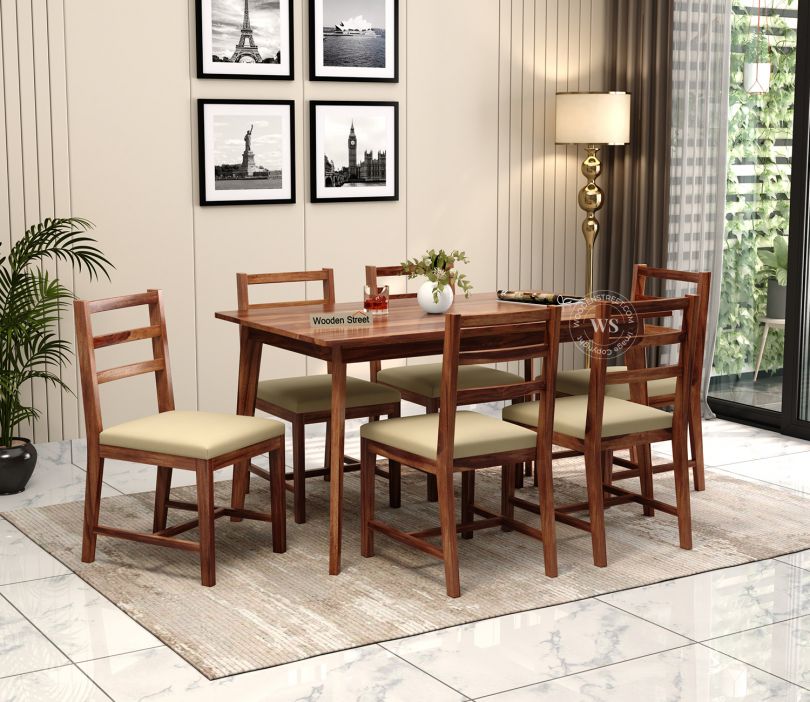The dining table is far more than just a piece of furniture. It stands as a silent storyteller of lifestyle, tradition, and personal taste. Positioned often at the heart of a home, the dining table is a gathering point, a place for conversations, shared meals, celebrations, and daily routines. Its design, material, placement, and styling speak volumes about the aesthetic choices and cultural influences that shape a home.
A Reflection of Design Philosophy
Every home is guided by a design language—be it minimalism, rustic charm, modern elegance, or eclectic flair. The dining table serves as a central element that ties this design philosophy together. For instance, in a minimalist setting, a dining table with clean lines, neutral tones, and functional form becomes the natural choice. On the other hand, a home with a vintage or rustic theme may feature a wooden dining table with textured finishes and a handcrafted appearance.
The design and build of a dining table can align with the broader visual tone of the interiors, such as wall colors, lighting, and flooring. Homes that embrace contemporary aesthetics often pair glass or metal dining tables with sleek chairs and soft lighting. Meanwhile, traditional homes may incorporate heavier wooden tables that emphasize warmth, heritage, and permanence.
Cultural Influence on Dining Table Choices
Culture plays a significant role in how people choose and use their dining table. In some regions, large dining tables are common, symbolizing hospitality and the importance of family gatherings. In others, compact designs reflect the preference for efficient use of space and intimate dining experiences.
The shape and layout of a dining table also reflect cultural norms. Round tables, for example, are preferred in cultures where equality and conversation are valued, as everyone faces each other directly. Long rectangular tables, on the other hand, are often associated with formal dining and hosting guests, where hierarchy and space planning are key.
Additionally, certain cultures integrate multi-functional uses of the dining space. The same dining table may double up as a workspace, a place for children to do homework, or a platform for festive preparations. This practical versatility reflects lifestyle choices rooted in cultural habits and the evolving dynamics of modern living.
Material and Craftsmanship as Storytellers
Materials tell stories, and dining tables crafted from specific materials often indicate not only aesthetic preferences but also regional identities and values. A solid wood dining table often suggests timelessness, sustainability, and tradition. It may carry grains, textures, and imperfections that make it unique, much like the family histories it silently witnesses.
Metal and glass dining tables, meanwhile, suggest modernity and urban sophistication. These are often preferred in metropolitan settings where design leans toward lightness, clarity, and spatial openness. Marble tops or stone-based dining tables, rich in texture and elegance, often symbolize luxury and a connection to natural elements.
Craftsmanship also reveals the value a household places on art, detail, and legacy. Intricately carved legs, inlaid patterns, or custom finishes show how a dining table becomes a canvas for artistic expression. These details offer a peek into the homeowner’s values, be it rootedness in cultural identity or admiration for craftsmanship.
Dining Table as a Social and Emotional Hub
Beyond its physical characteristics, the dining table serves as a symbol of togetherness. It is the stage where everyday interactions unfold—morning breakfasts, evening talks, celebratory meals, and quiet moments over coffee. The way it is decorated, used, and maintained reflects the emotional tone of a home.
A dining table adorned with candles, flowers, or handmade runners suggests a home that cherishes warmth and detail. An open and uncluttered table might signal a preference for simplicity and clarity. Families that place importance on shared meals often invest in larger dining tables to accommodate everyone, emphasizing the role of bonding in their lifestyle.
In many homes, traditions revolve around the dining table. Be it a special dish cooked every weekend, a seasonal decor change, or a family game night—these rituals give the table emotional depth and make it a living part of the household’s story.
Personalization and Evolving Aesthetics
As lifestyles evolve, so do the choices around dining tables. Today, people mix styles freely—a modern dining table might be paired with vintage chairs or contrasted with vibrant tableware. This eclectic blend of elements reflects a growing sense of individuality in home design. Rather than adhering to strict style rules, homeowners use the dining table to express their personality, interests, and sense of comfort.
Custom furniture and curated setups are becoming more popular, allowing dining tables to adapt to changing needs. Expandable designs, foldable tops, and modular seating options cater to dynamic households, reflecting not only the aesthetic but also the functional values of the residents.
Moreover, the rise of sustainable living has also influenced dining table choices. More people are opting for ethically sourced wood, eco-friendly finishes, or upcycled materials. This shift not only reflects design preferences but also the values that shape a household’s lifestyle.
Conclusion
The dining table is a powerful symbol—functional yet deeply expressive. Its design, materials, size, and setting all come together to reflect the aesthetic choices and cultural roots of a home. It is a piece of furniture that holds more than plates and dishes—it holds stories, habits, values, and connections.
Whether placed in a small apartment or a grand dining room, the dining table remains a space of gathering and expression. It mirrors the identity of those who sit around it and adapts over time to new ways of living. In understanding the role of the dining table, we see how something so simple can carry the beauty and complexity of an entire home and its culture.
